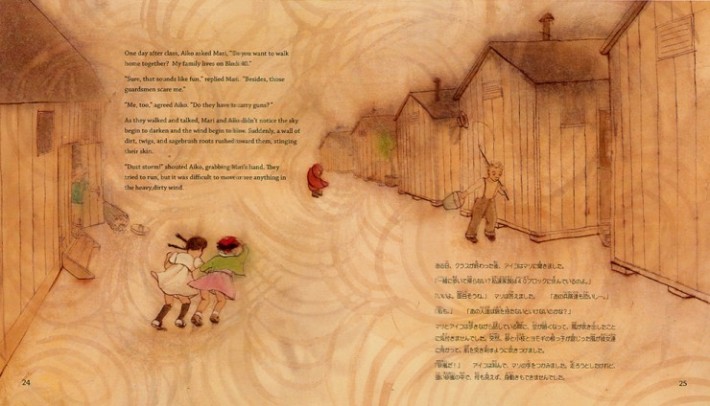Some of the most powerful and emotionally resonant stories for young readers tackle challenging historical events through the eyes of a child. Amy Lee-Tai’s award-winning children’s book “A Place Where Sunflowers Grow” exemplifies this approach by providing a window into the Japanese American experience of incarceration during World War II. Although difficult subject matter, the book conveys themes of hope and inner strength that resonate with children and adults alike.
Historical Backdrop of the Story
In 1942, over 100,000 Japanese Americans were forcibly relocated from their West Coast homes into internment camps across desolate areas of the country. Families lost their homes, possessions, and livelihoods when rounded up into these bleak camps surrounded by barbed wire. The story focuses on a young girl named Mari who is sent along with her family to the Topaz camp in the harsh Utah desert.
The injustice and conditions endured in the camps were far from an ideal environment for children Yet within this climate of adversity, many internees sought solace through art, education, and community. This impulse towards creativity and human connection forms the emotional core of “A Place Where Sunflowers Grow.”
Mari Finds Her Voice Through Art
At the start of the story Mari feels lonely homesick, and unable to see beauty in her surroundings. But when she begins attending art classes, she discovers a positive outlet for self-expression. Although initially struggling to think of what to draw, encouragement from her teacher and family inspire her.
Through her art, Mari begins to process her emotions. She depicts cherished memories from her pre-camp life. As Mari shares these drawings with others, she builds connections and community. Her sunflowers take root as symbols of the power of art and hope flourishing even in such an environment.
Resonance of Themes for Young Readers
Children reading the book can relate to Mari’s perspective and emotions in ways that foster empathy and learning
- Feeling lost and out of place when forced to relocate
- Turning to creativity as an emotional outlet
- Building a support network of friends, teachers, and family
- Discovering hope and meaning through small moments of beauty
While she endures hardship, Mari maintains her humanity and inner strength. Her journey empowers readers to believe they too can overcome challenges through perseverance and seeking out life’s fleeting joys.
Hibi Family History Woven Throughout
Author Amy Lee-Tai drew from her own family’s history to shape the narrative. Her grandparents Hisako and Iwao Hibi, along with her mother as a child, were confined at the Topaz internment camp. Hisako was a talented artist who taught classes there much like Mari’s teacher.
Illustrator Felicia Hoshino also brought a personal connection, as her father’s family was interned. Both author and illustrator used the unique perspectives of their ancestors to breathe life into Mari’s fictional tale.
Honoring Japanese American History
Since its 2006 publication, “A Place Where Sunflowers Grow” has received praise for sensitively introducing young readers to this troubling episode from America’s past.
The book presents internees with dignity and humanity. It provides enough historical context for children without graphic details, allowing room for hope and healing. Delicate mixed media illustrations by Felicia Hoshino enhance the emotional impact.
While a serious topic, the story resonates for its core messages of resilience and the redemptive nature of art and community. It has become a valuable teaching tool to make history relatable through a child’s eyes.
Enduring Messages of Strength and Beauty
At its heart, “A Place Where Sunflowers Grow” affirms that even in life’s bleakest moments, there exists hope, meaning, and beauty for those who seek it out. Mari’s journey remains capable of touching the lives of new generations of children.
They learn from her example that we all have reserves of inner courage, creativity, and connection waiting to be tapped into. By seeing hardship through Mari’s perspective, young readers gain insight, empathy, and inspiration.
Through its gentle power, this small personal story of one child’s growth continues to shed light on broader truths of the human experience. Just as Mari’s tiny sunflowers push up towards the light, so too can the human spirit persevere and renew itself. Amy Lee-Tai and Felicia Hoshino’s enduring book offers an impactful reminder to nurture this light within ourselves and others.
Kate Reads: A Place Where Sunflowers Grow
FAQ
What is a place where sunflowers grow about?
Where do sunflowers usually grow?
Where are most sunflowers grown in us?

